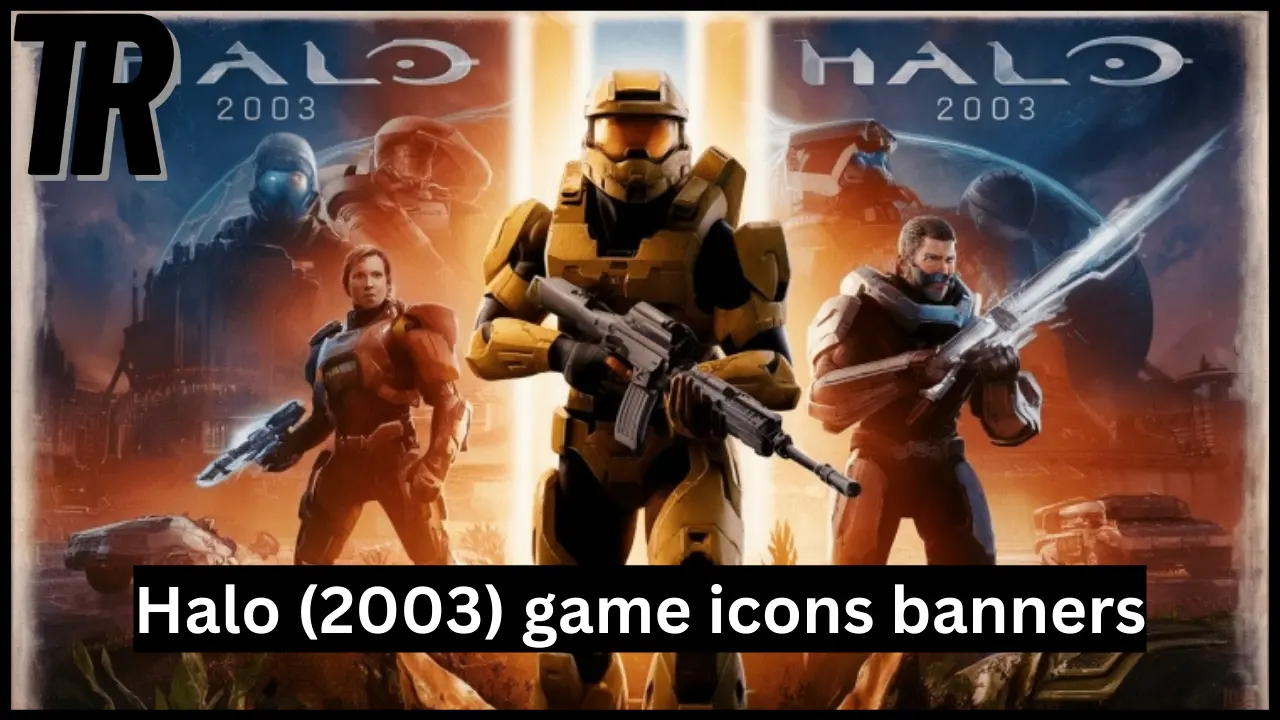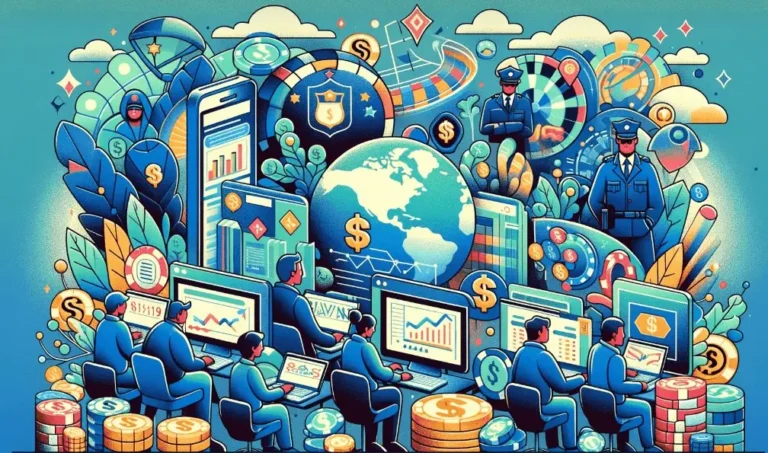Halo: Combat Evolved, released in 2001, revolutionized the gaming industry, but it was the 2003 version that truly cemented its place in gaming history with Halo (2003) game icons banners. These visual elements not only enhanced the game’s aesthetics but also became a significant part of its identity. For any gamer, the images associated with Halo bring back memories of intense battles and epic adventures, making the game’s visual elements a crucial aspect of its enduring appeal.
What sets Halo apart is the attention to detail in its visual design. The Halo (2003) game icons banners were not just thrown together; they were carefully crafted to represent the themes and stories of the Halo universe. These elements were designed to be instantly recognizable, providing a seamless and immersive experience for players. As we dive deeper into the artistry, evolution, and impact of these visuals, you’ll gain a greater appreciation for the work that went into creating these enduring symbols.
In this comprehensive exploration, we will examine how these icons and banners were developed, their significance in the gaming world, and their lasting impact on the Halo franchise and gaming culture as a whole. From the meticulous design process to the way these visuals have evolved, this article will cover every aspect of Halo’s iconic imagery, ensuring you understand why they remain so beloved by gamers worldwide.
The Artistry Behind Halo (2003) game icons banners
The design of Halo’s icons and banners involved collaboration between artists, designers, and marketing experts. These visuals were crafted to be both appealing and representative of the game’s themes and story.
Design Elements
Bold colors, futuristic typography, and detailed illustrations were employed to reflect the high stakes and epic scope of the Halo universe. These elements were meticulously chosen to convey the intensity and grandeur of the game.
Iconography
Icons for weapons, vehicles, and multiplayer modes were designed to be instantly recognizable. This not only enhanced the user interface but also made the gameplay more intuitive and engaging.
Visual Cohesion
The goal was to create a cohesive visual identity that would be instantly recognizable. This consistency helped in establishing a strong brand identity for the Halo franchise, making it stand out in the crowded gaming market.
Evolution of Halo’s Visual Identity
Halo’s visual identity has evolved significantly since its inception. This evolution reflects both technological advancements and changing artistic trends.
Technological Advancements
With each new installment, the visual elements of Halo have been refined to take advantage of advancing technology. This has included higher-resolution textures, more detailed models, and more complex animations.
Artistic Trends
As artistic trends have changed over the years, so too has Halo’s visual style. While core elements like the Master Chief’s armor have remained constant, new visual elements have been introduced to keep the series fresh and exciting.
Expanded Visual Language
New symbols and iconography have been introduced with each game, expanding the visual language of the Halo universe. This has helped to keep long-time fans engaged while attracting new players to the series.
Memorable Halo (2003) Game Icons
The icons from Halo (2003) are some of the most memorable in the franchise. These icons are not just functional; they are symbols of the game’s intense combat and tactical gameplay.
Weapon Icons
Icons for weapons like the MA5B Assault Rifle and the Energy Sword are instantly recognizable. These icons have become synonymous with the high-octane action of the Halo series.
Vehicle Icons
Vehicle icons, such as those for the Warthog, are equally iconic. These icons represent the vehicular combat that has become a hallmark of the Halo series.
Multiplayer Icons
Multiplayer mode icons are designed to be easily identifiable at a glance. This helps players quickly understand their options and jump into the action.
Banners: Setting the Scene
Halo’s promotional banners are more than just advertisements; they are works of art that set the tone for the game. Featuring epic landscapes, intense action scenes, and key characters, these banners immerse potential players in the Halo universe even before they pick up the controller.
Promotional Impact
The banners have played a crucial role in promoting the game and attracting new players. Their dramatic visuals and compelling designs create a strong first impression.
Artistic Value
These banners are not just functional; they are also aesthetically pleasing. The detailed artwork and vibrant colors make them stand out, even in crowded advertising spaces.
Storytelling
The banners often tell a story, capturing key moments and themes from the game. This helps to draw players into the Halo universe and get them excited about the game.
The Impact of Halo (2003) game icons banners on Gaming Culture
Halo’s game icons and banners have transcended their immediate marketing purposes to become cultural icons. They are frequently referenced in fan art, merchandise, and even cosplay, demonstrating their deep connection with the gaming community.
Fan Art
The Halo community has produced countless pieces of fan art inspired by the game’s icons and banners. This fan art often pays homage to the original designs while adding new elements and personal touches.
Merchandise
Halo’s visual elements have been used in a wide range of merchandise, from t-shirts to action figures. This has helped to further cement the game’s place in popular culture.
Cosplay
Many fans choose to cosplay as characters from Halo, complete with iconic weapons and armor. This is a testament to the lasting impact of the game’s visual design.
Community and Fan Contributions
The passionate Halo community has significantly contributed to the franchise’s visual landscape. Fans have created their own versions of icons and banners, showcasing their creativity and dedication to the game.
Fan-Made Designs
Fans have created their own versions of the game’s icons and banners. These fan-made designs often pay homage to the original art while introducing new elements and personal touches.
Modding
The modding community has also embraced Halo’s visual assets, incorporating custom icons and banners into various game modifications. This allows players to personalize their gaming experience and explore new interpretations of the Halo universe.
Community Projects
Community-driven projects have further enriched the game’s visual culture. Official contests and initiatives often lead to the inclusion of fan-made designs in official releases.
Customization and Player Identity
Customization options in Halo allow players to create unique emblems and banners, fostering a sense of identity and community within the game.
Personalization
Customization features allow players to create unique emblems and banners. This personalization helps players feel more connected to their characters and to the game.
Community Building
Customized icons and banners contribute to community building by creating a shared visual language among players. This fosters a sense of belonging and camaraderie within the Halo community.
Engagement
Customization options keep players engaged by allowing them to express their creativity and individuality. This adds an extra layer of depth to the gaming experience.
Marketing and Branding
The use of strong, memorable icons and banners has been a key factor in Halo’s marketing success. These visual elements help create a cohesive brand identity, making Halo instantly recognizable even to those who may not be familiar with the game itself.
Brand Identity
Halo’s visual elements are central to its brand identity. The consistent use of certain icons and design elements helps to create a strong and recognizable brand.
Advertising
The game’s banners have been used extensively in advertising campaigns. Their dramatic visuals and compelling designs help to attract new players and generate excitement for new releases.
Recognition
The distinctive visual style of Halo’s icons and banners makes them easily recognizable. This helps to build brand recognition and loyalty among players.
Technological Advancements and Future Trends
As technology advances, Halo’s visual elements are set to evolve further. Future trends include animated icons, dynamic banners, and more interactive visual elements. These advancements will provide even more immersive and engaging experiences for players.
Animation
Future icons and banners may incorporate animation to create more dynamic and engaging visuals. This could include subtle movements or more complex animations that bring the designs to life.
Interactivity
Advances in technology may also lead to more interactive visual elements. This could include banners that respond to user input or icons that change based on in-game events.
Virtual Reality
The advent of virtual reality offers exciting possibilities for Halo’s visual elements. VR could allow players to experience icons and banners in entirely new ways, adding a new dimension to the game’s visual design.
Conclusion
Halo (2003) game icons banners are far more than mere design elements; they are powerful symbols that have shaped the franchise’s identity and left an indelible mark on gaming culture. From their inception as part of the game’s marketing strategy to their lasting influence through fan art, merchandise, and cosplay, these visuals have become iconic representations of the Halo universe. The bold and distinctive designs have not only enhanced the player experience but also contributed to the series’ lasting appeal, demonstrating how thoughtful visual design can elevate a game from a product to a cultural phenomenon.
As we look to the future, it’s clear that the legacy of Halo’s visual elements will continue to evolve alongside technological advancements and changing trends. The potential for animated icons, interactive banners, and virtual reality experiences opens up exciting new avenues for how the franchise will engage with its community. However, the essence of what made Halo (2003) so memorable—the innovative designs and their profound impact on both players and the gaming industry—will remain a cornerstone of the series’ success. This enduring legacy is a testament to the skill of the artists and designers who crafted these unforgettable images and to the game’s lasting place in the hearts of gamers everywhere.
You May Like These Too:
127.0.0.1:49342: The Ultimate Guide to Localhost Testing
Shop Smart on Aliasshare.shop: Top Tips for Best Deals




